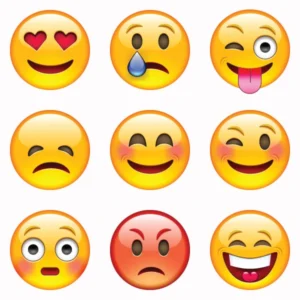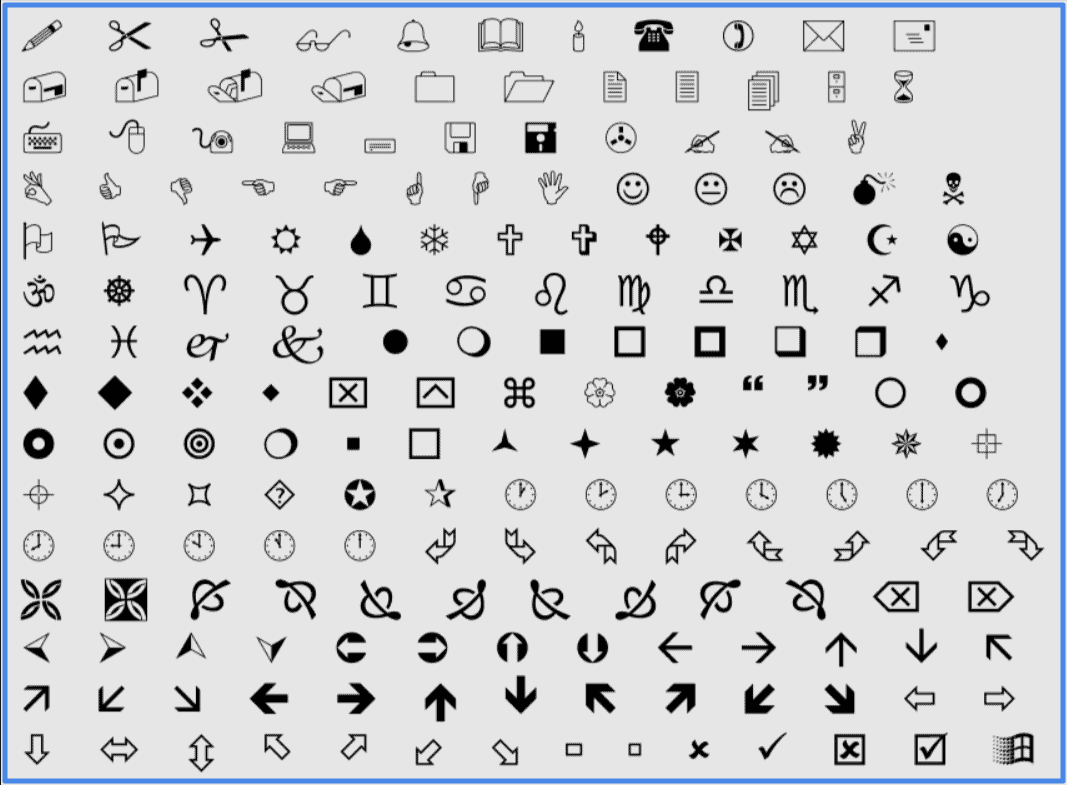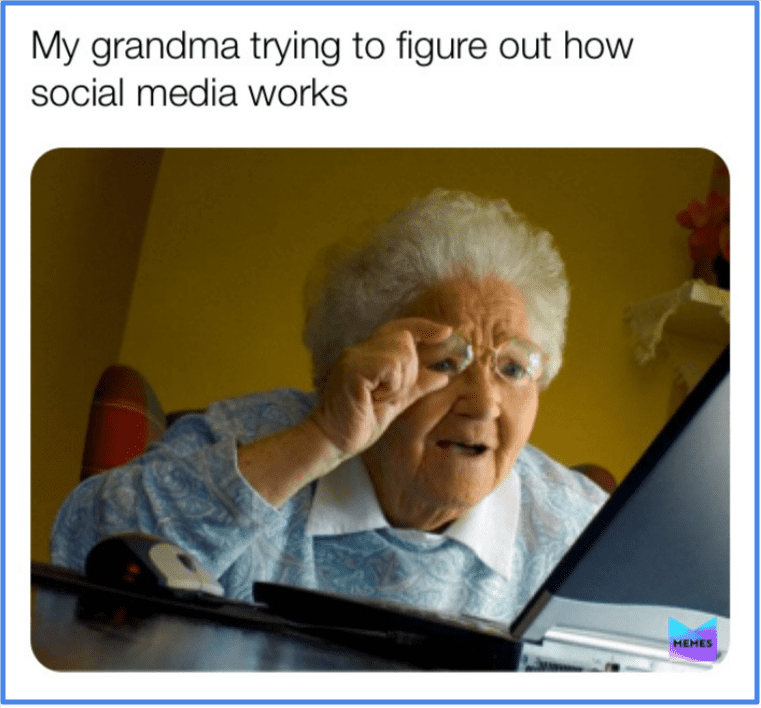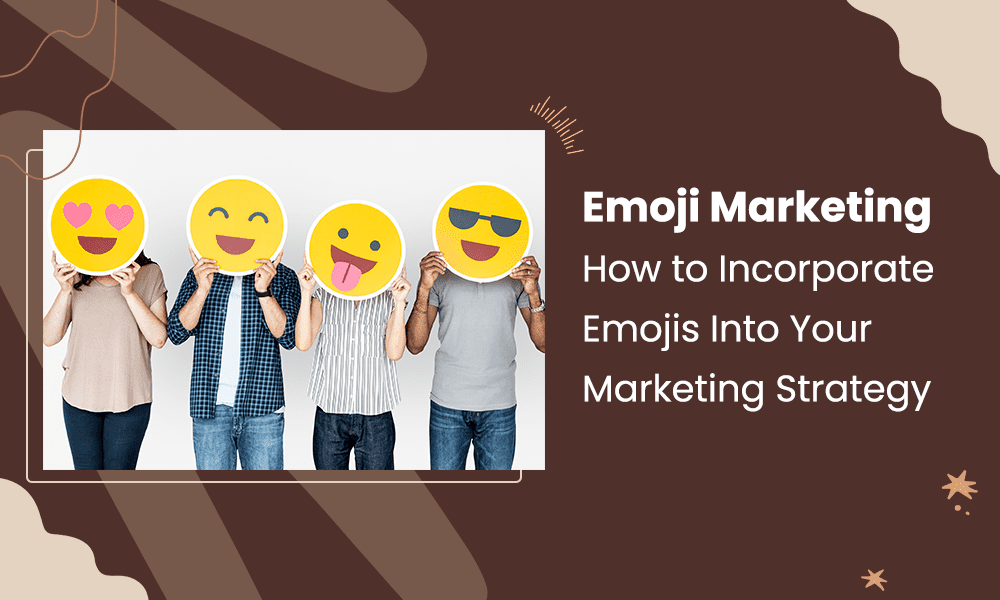Ah, emojis in marketing – a topic that stirs up some mixed feelings among the savvy marketers out there! 🤔
Some folks are dead set against these cute little characters making an appearance in their marketing copy, fearing they might tarnish their professionalism (except, of course, when it’s a social media party!). 🎉
But hold on! Not everyone’s playing hard to get with emojis.
There’s a squad of marketers who are all for these delightful symbols, as long as they’re not taking the plunge into emoji overdrive. 😅 After all, you don’t want your marketing message drowning in a sea of smileys and hearts, right?
If you’re part of the emoji fan club for marketing, give yourself a high-five! 🙌 You’ve got plenty of company. According to the emoji experts at ZoomInfo, we’re flinging around a jaw-dropping 10 billion emojis on the internet every single day!
And hey, some of those emoji enthusiasts just have to be marketers, don’t you think? 😀
With a whopping 3,633 emojis floating around the digital universe, there’s practically an emoji for every emotion and occasion imaginable! 😍❤️ From happy faces to thumbs up, and from tacos 🌮 to unicorns 🦄, these tiny characters have got us covered.
But hold your horses, marketing maestro! Before you start flinging emojis left and right, we’ve got some tips and tricks to share in our ultimate guide to emoji marketing.
We’ll show you when it’s the perfect time to sprinkle some emoji magic, and when you might want to hit the brakes and keep it emoji-free. 😎
So, buckle up, emoji explorer! We’re about to dive into the wonderful world of emoji marketing and uncover the secrets to making your content shine with these little wonders. Get ready to learn:
🚀 When to use emojis in marketing – the right moments to make your message pop like a confetti-filled surprise!
🛑 When NOT to use emojis in marketing – because even the most fun-loving emojis have their boundaries.
💡 How to nail your emoji marketing strategy – because slapping emojis all over the place won’t do the trick!
So, grab your favorite emoji, and let’s embark on this delightful emoji adventure together! It’s time to make your marketing content sparkle like a disco ball. 🌟
Table of Contents
Where Do Emojis Come From, Anyway?

Have you ever stopped and wondered why emojis have become so embedded in our day-to-day lives? Let’s go over the history of the emoji so you can appreciate its origins a little better.
Emojis came from emoticons, which are typically attributed to Scott Fahlmnan, a computer scientist, back in the early 1980s.
Emoticons in those days were purely keyboard symbols used to make expressions, such as these:
:) :-) ;) :/
It wouldn’t be until the 1990s that companies throughout Europe, the United States, and Japan tried to capitalize on the emoticon.
That’s where the wingdings Microsoft font came from in 1990. Wingdings definitely included more advanced emoticons than the OGs, but left something to be desired, still.
For example, if you didn’t have the wingdings font downloaded, or if you were communicating with a Mac user, then the wingdings didn’t show up.

The first phone to include emojis was the J-Phone SkyWalker DP-211SW, which had 90 emojis in all. That’s not many by today’s standards, but back then, it would have seemed like a treasure trove!
All the emojis were 12×12 pixels in monochrome and featured depictions of weather events, moon phases, time, sports, and numbers.
Few people remember the SkyWalker because it didn’t sell well.
On this day in #smarterhistory, the first phone with emojis was released. The SkyWalker DP-211SW influenced many of the emojis we use today, although some were tough to decipher. Can you count how many animal emojis there are? pic.twitter.com/h5hrEqI43s
— Lenovo (@Lenovo) October 30, 2020
Later, Shigetaka Kurita, an interface designer from Japan, made a set of 176 emojis for i-mode, a feature of NTT DoCoMo, a mobile phone from Japan.
This kickstarted the growth of emojis in Japan, which would evolve in a big after the turn of the century. Japan established its Universal Coded Character Set or Unicode first, which inspired other countries to follow suit.
When to Use Emojis in Marketing
As useful as emojis are, we can’t pretend that they naturally slot into every marketing campaign, because they simply don’t.
This section will go over instances in which emojis are a suitable means of reaching your audience. In the next section, we’ll talk about when you should just skip using the emoji in marketing.

When Sending SMS Marketing Messages
Where more so than in text messages does a person expect to see an emoji?
Marketing resource 99Firms reports that nearly 60 percent of consumers think that SMS messaging is the most effective communication option.
That said, there’s not much flourish that you can add to an SMS message. There’s no headline, and sending images unprompted isn’t the best idea. Those who aren’t on their home or office Wi-Fi might not even be able to see your images.
Adding an emoji or two to your SMS message makes it stand out more. It also establishes the crux of the message if your recipient only has a second to look at the text.

In the Email Subject Line to Grab Attention
Writing an email subject line as a marketer is an art. Do you try to invoke a sense of FOMO, ask a question that’s going to inspire the reader to open the email to get the answer, or do you try the vague and cryptic approach?
If your email subject lines are duds rather than slam dunks, why not try incorporating emojis into your headers? An emoji will show up on computers and mobile devices alike, even if it doesn’t look identical across all devices.
Compared to an inbox full of text-based subject lines, one with an emoji is sure to get your reader’s eyes honing in on your message.

In Social Media Marketing
The buttoned-up approach doesn’t work on social media when everyone else is using it to have fun or pass the time.
Your company can always try letting its figurative hair down and adding emojis to the next Facebook posts you make, especially if that post doesn’t have an accompanying link competing for attention.
To Increase the Veracity of Your Message
If you want to craft a believable message, emojis are probably the last thing you would think of using, right?
Yet a 2020 report from the American Psychological Association says otherwise. In the study, more than 200 college students looked at a series of tweets on Twitter.
The findings were quite interesting! According to the researchers, it’s easier to understand a message with an emoji in it. Further, the messages that include emojis are deemed more believable 😁
Maybe it’s the accompanying emoji driving home an emotion, but if you want to get a marketing message across and make it convincing, don’t eschew emojis.

When You Want to Forge an Emotional Connection with Your Audience
Another report from 2020, this time published by PLOS ONE, found that the combination of words and emojis, when doing human brain scans using an fMRI machine, could activate memory retrieval, emotion recognition, and word processing.
You can connect in a new and more emotional way with your audience segments by using emojis.
Who knew 😲
Read also: Shrug Emoji: A Quick Tutorial for Fun Marketing [Short Article]
When NOT to Use Emojis in Marketing
As well-received as emojis usually are, that doesn’t mean that emojis are appropriate for every last type of marketing campaign. Here are some scenarios in which you’re better off skipping the emoticons.
When Your Audiences Aren’t the Millenials
Younger generations cannot remember a time before emojis. Those in their 30 grew up seeing the introduction and evolution of emojis in communication tech.
For people who are older still, it’s hard to even relate to the concept. Many people who didn’t have a smartphone in their hands when they started their careers or married lives are today exposed to emoji marketing but may not take well to it.

Once you get into audience segments in their 50s and older, emojis just may not relate well.
These people might not personally use emojis themselves, and even if they do, they may like to restrict the emojis to personal chats.
If the Meaning Isn’t Universally Understood
The 3,600+ emojis at our disposal mean we can express ourselves in truly nuanced ways.
Take the smiley face, for instance. More so than just the smiling emoji, now we have emojis with sly smiles or wide grins.
The variety of emotions we can express is astounding, but the more emojis, the more ambiguous that some of their meanings can be.
You might think an emoji means one thing and should be used one way while someone else perceives it completely differently.
This can cause a disconnect in your message. Rather than focus on the meaning of your message, your audience will dissect why you chose the emoji you did.
If You’re Trying to Be Serious in Your Messaging
Like you wouldn’t wear colorful clothes at a funeral, you shouldn’t use emojis if you’re trying to convey a serious message in your marketing. The emoji just doesn’t fit.
Read also: 151 Emojis with their Meanings and how to Use them
Tips to Get Emoji Marketing Right
To wrap up, here are some tips for incorporating more emoji usage into your future marketing campaigns.

Use Emojis Sparingly
Emojis, as we’ve established, are a powerful way to grab attention, convey emotion, and make your brand’s messaging more believable.
Like any marketing tactic though, the more you overdo it, the less effective it becomes.
If your readers expect to see an emoji in every email header, then it just becomes noise to them.
Keep your emoji use light-handed so that when you do whip out an emoji, it has meaning and is hence effective.
Avoid Negative Emojis
If you’ve ever wanted to express sarcasm in a marketing message, emojis are a great way to do so nonverbally, which feels like playing it safe.
That said, you don’t want to connotate negative emotions with your campaigns, do you? The answer should be no.
That’s why it’s best to steer clear of any emojis with negative implications. That includes any sarcastic or angry emojis, anything violent, and obviously anything to do with death, such as the skull or tombstone emojis.
The crying emojis can work in some instances, such as if you’re trying to induce FOMO, but otherwise, avoid sad-looking emojis.

No Innuendos
Emojis touch on sexual and religious topics, but just because those emojis are there doesn’t mean it’s a good idea to use them.
Don’t Overdo It in One Message
If you’re writing an email or a long social media post, there’s no need for an emoji with each new paragraph.
You also shouldn’t string together five or six emojis in a row, as at that point, their meaning becomes lost.
It’s easy to get an emoji high (😉) when trying to make marketing fun, but remember that too much of anything is too bad.
Read also: Emoji with Symbols – Dress Up Your Marketing Messages
Wrap Up
Emojis have undeniably secured a significant spot in the realm of modern marketing campaigns, and there’s absolutely no reason to hold back from incorporating them into your strategies.
In fact, studies and research have proven that emojis possess a remarkable ability to forge a strong emotional connection with your audience.
These delightful symbols have the power to infuse messages with personality, evoke sentiments, and make your communication more relatable and authentic.
By leveraging emojis strategically, you can create a sense of familiarity and trust with your target audience, ultimately enhancing the effectiveness of your marketing efforts.
Nevertheless, like adding a pinch of spice to a dish, employing emojis with caution and in moderation is the golden rule.
By using them sparingly, you ensure that the impact of each emoji is maximized when it does make an appearance. This thoughtful approach prevents your content from becoming cluttered and maintains a level of professionalism while still adding a playful touch.
When done right, emojis can work wonders, making your messages more engaging, memorable, and believable.
Your audience will appreciate the charm and creativity, while you enjoy the increased engagement and brand affinity.
So, as you navigate the ever-evolving landscape of marketing, remember to embrace emojis as a powerful tool in your arsenal.
Let them infuse your campaigns with that extra spark, and rest assured that by using them judiciously, you can rely on emojis to consistently deliver impact and effectiveness whenever they grace your content.
Happy emoji marketing, and may your messages always sparkle with a touch of emoji magic! ✨🚀😊
👉Unleash the potential of emojis to boost your customer service experience – check out our detailed article! 💡

